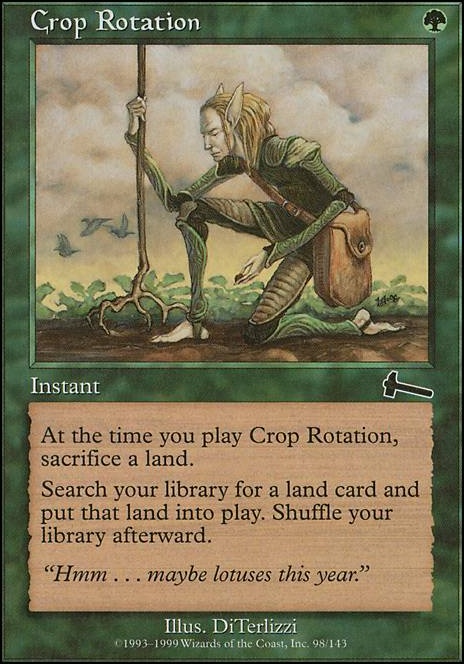Crop Rotation is insanely powerful and an immediate 4-of, so our other potential tutors are
Expedition Map and
Sylvan Scrying. Scrying is less total mana to cast and therefore preferred. There could be a case for playing a split between them just for mana curve reasons.
The Naya Depths lists don't run these "to-hand" land tutors, but there's a significant benefit to having at least some of those effects, because it lets us find Boseiju, Who Endures to clear a Blood Moon, which is otherwise a total lockout.
Very old Depths lists would play Into the North, plus snow-covered basics, as another way to find Depths. This is almost certainly the worst of the tutors and I mention it just for historical interest.
The Math of "Once Upon a Time"
Once Upon a Time (OUAT) is not played in most of the creature-light depths lists because they prefer the consistency of finding combo pieces. But, OUAT is very powerful:
-
cheats on mana to look at the top 5 cards in the first turn of the game, so more marginal hands become "keeps".
-
later in the game OUAT is playable at instant speed, so we can hold up some other play and then cast this on their end step to find a needed piece.
-
Makes our sideboarded creature "hatebears" more consistent because we're more likely to find them.
What are your chances for an important hit when casting OUAT on turn 1? Is it consistent enough?
All assuming you don't have one in your opening hand:
-
get a Dark Depths (or any other 4-of): 33%
-
get a Hexmage or Thespian's Stage (7 hits): 52%
-
get any half of the combo, assuming you have a tutor which gets the other half (11 hits): 70%
-
get a source that produces both and (8 hits): 57%
-
get a source (12 hits): 74%
-
get a source (10 hits): 66%
-
get a source or Spirit Guide (14 hits): 80%
Once Upon a Time basically makes your mulligans better, but at the cost of lower consistency and ability to find silver-bullet lands on demand.
How many OUAT do we play?
We want to draw it in the opening hand, but only one copy. Not really wanting to see additional OUAT in our first 3 draws.
-
4x OUAT: 36% chance to draw exactly one in the first 7. (7% chance of 2 in opening hand). 16% chance to draw 2 or more in the first 3 turns.
-
3x OUAT: 30% chance to draw exactly one in the first 7. (4% chance of 2 in opening hand). 8% chance to draw 2 or more in the first 3 turns.
-
2x OUAT: 25% chance to draw exactly one in the first 7. (1.5% chance of 2 in opening hand). 3% chance to draw 2 or more in the first 3 turns.
-
1x OUAT: 13% chance to draw exactly one in the first 7.
To have the best chance to draw one but not extras, 3 copies is the best number. Later in the game, we prefer to draw Sylvan Scrying and find exactly a land we are looking for.
Once Upon a Time makes our sideboard better.
Say we really want Collector Ouphe to shut down an artifacts deck.
-
With 1 copy of Ouphe, there's a 12% chance it's in our opening hand. With 2 copies of Ouphe, there's a 22% chance.
-
OUAT has a 9.4% chance to find a 1-of creature out of our deck.
-
With 3x OUAT, that's a 30% chance to have it in the opener, so we can hit an Ouphe either on the 12% it's in our starting hand, or on the 30% chance we have an OUAT and the 9.4% chance it finds an Ouphe: about an extra 3% chance, or 15% odds that we get an Ouphe in our opener.
This makes our limited sideboard space a little bit more potent.

